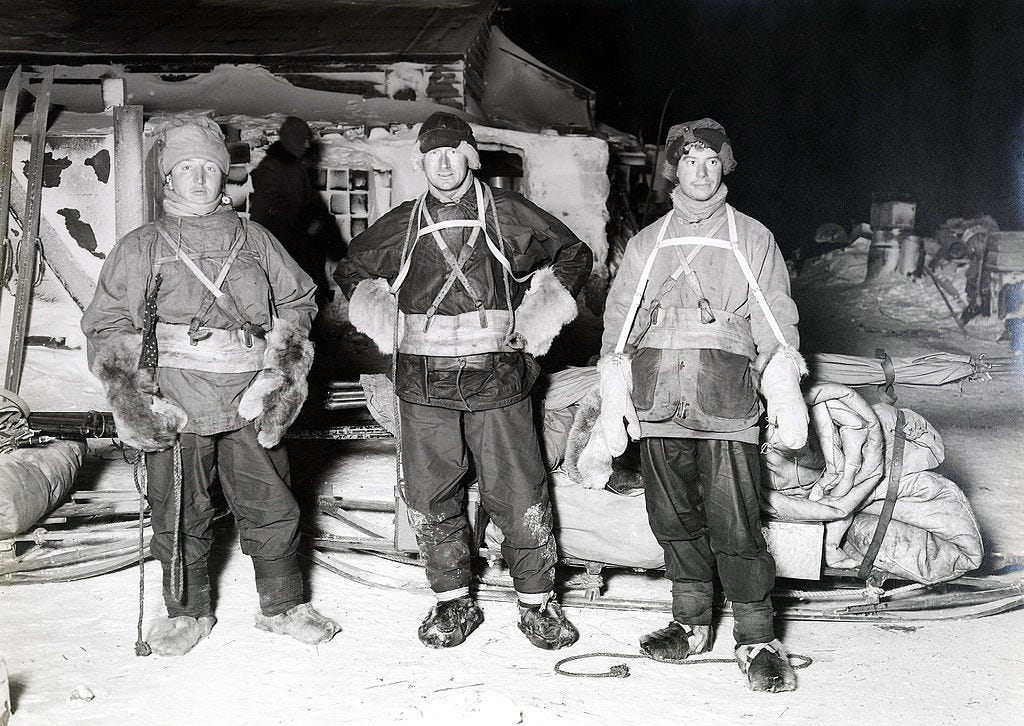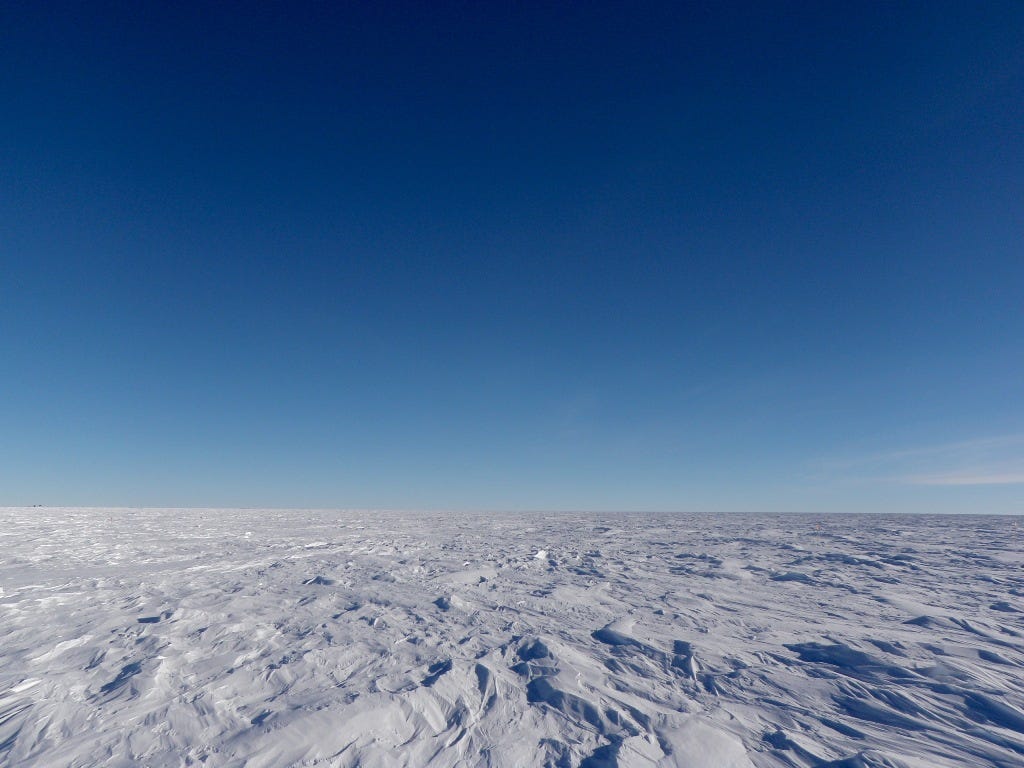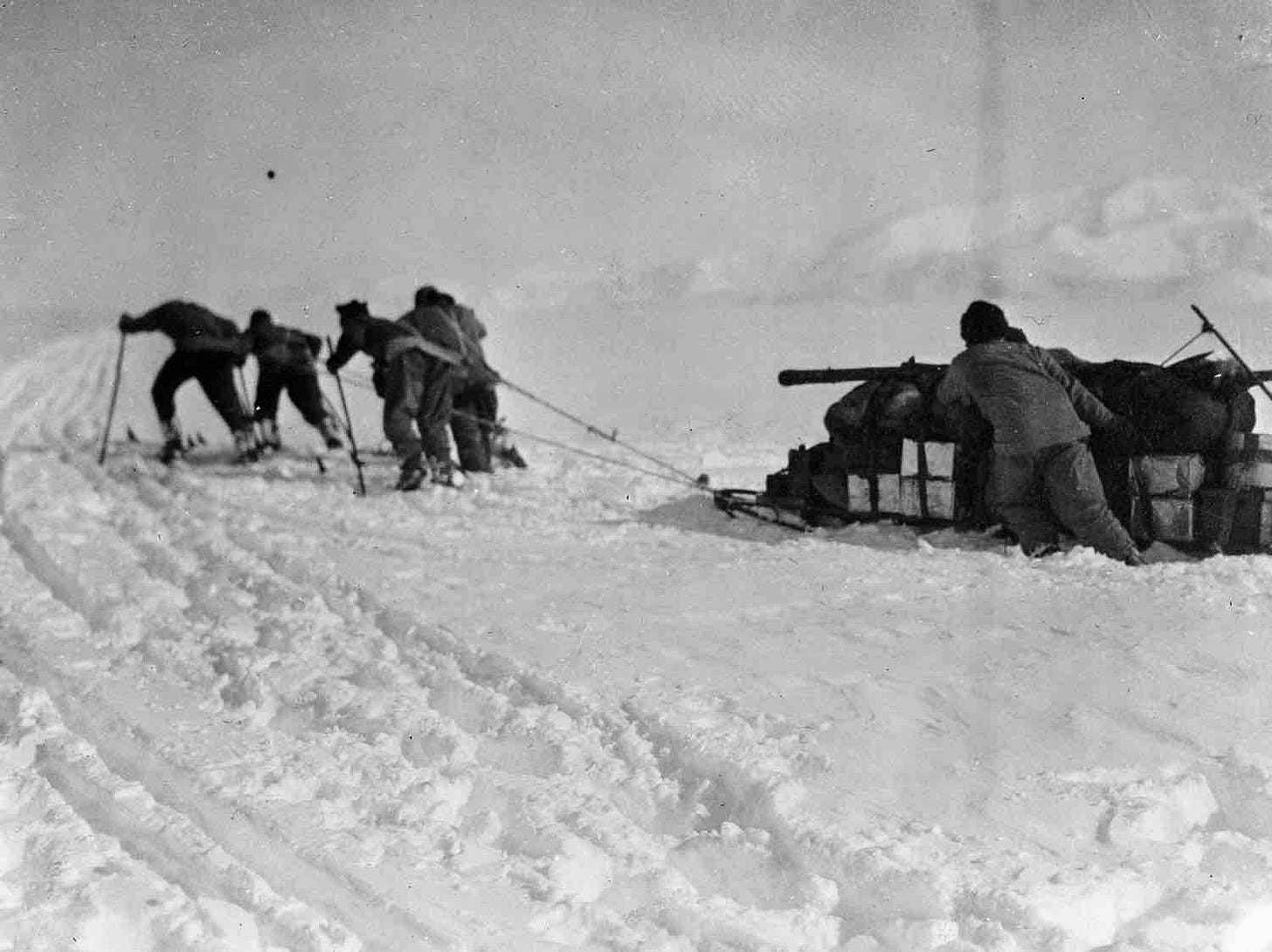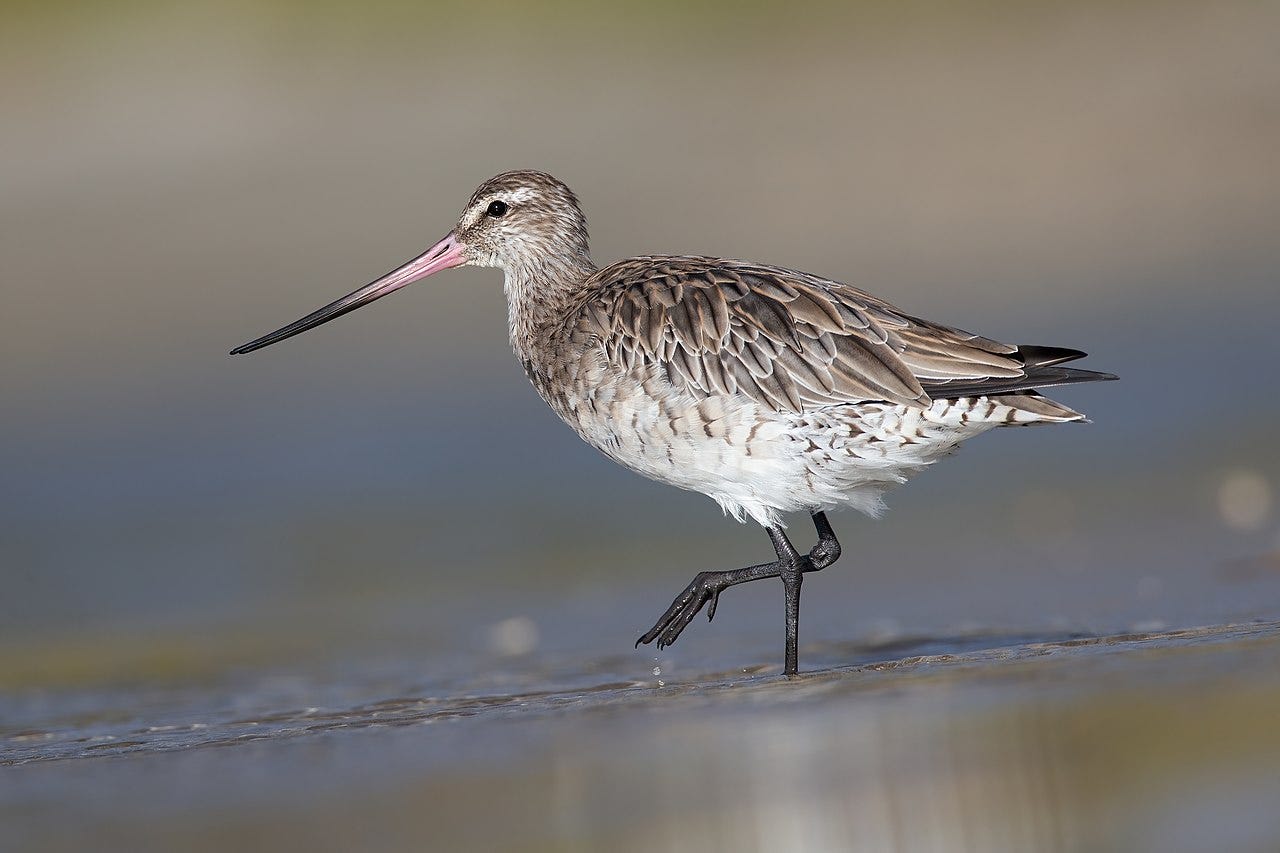An Introductory Paradox
Here are two things I believe:
Speed is a startup's key advantage.
Startups are a marathon, not a sprint.
Unfortunately, they're mutually contradictory!
If startups are a marathon, then staying power should count for more than speed. Conversely, if speed is the key, then why worry about stamina and resilience and the long haul?
One way to resolve this contradiction is to simply say, this is why startups are hard. You have to do both: go as fast as you can for as long as you can. Sprint the marathon.
But I think there's a deeper resolution, and I found it in events from over a hundred years ago. Read on!
1909: The Worst Journey In The World
Apsley Cherry-Garrard was an unlikely explorer. Physically frail, painfully shy, nearsighted to the point of blindness — it was a surprise to all involved when he was selected to join Robert Falcon Scott's ill-fated 1909 expedition to the South Pole.
But Cherry quickly proved his worth. He was a willing worker, cheerful and kind, grittily determined and impossibly brave. Nowhere were these qualities more evident than during ‘The Winter Journey’, a harrowing trip across the Antarctic glacier in the depths of the long polar night to retrieve eggs from a colony of Emperor penguins. Along with two others, Cherry man-hauled 350kg of food and supplies hundreds of miles by sledge across rock and crag and ice, in temperatures reaching -75°C and amid almost total darkness.
This was Cherry's finest hour, a feat of superhuman endurance and staggering courage. Yet it was also this journey that broke him; it rendered him unfit for the more glamorous dash to the Pole itself, and left him sickly and pensive for the rest of his days.
Worse was to come. The next Antarctic summer, Scott's polar expedition party were starving, exhausted, stricken by injury and frostbite and scurvy. Cherry led one of the relief teams searching for them. But he was forced, by bad weather and depleted rations, to turn back — just a few miles miles away from the tent where (unknown to him) Scott and his companions lay helpless and dying. It was a decision that would haunt Cherry for the rest of his life, and it colours every page of his memoir of the expedition, The Worst Journey In The World.
The Worst Journey is a minor masterpiece, one of the classics of travel and exploration. And yes, it's a tragedy — but it's also a book about heroism. If courage is grace under pressure, Scott's company embodied it: from the unquenchable optimism of Birdie Bowers, to the calm competence of Crean and Lashly, to the laconic dignity of Titus Oates. In the face of impossible conditions, they kept on. It's one of my favourite books.
A Pleasant Jaunt
But Scott lost. Scott lost.
He lost not only his race to be first at the pole, but also his life, and the lives of the four men he reached the pole with. Glorious failure makes for inspiring memoirs, but it is failure nonetheless.
Scott's great rival, the Norwegian explorer Roald Amundsen, succeeded. And he did so with comparative ease. While Scott's 12-man summit party were laboriously dragging 1000 kg of food and supplies up a 10,000 ft glacier on sticky wooden sledges, often relaying so that they had to cover each piece of ground three times, Amundsen's party used skis and dogsleds and didn't have to man-haul even once.
Scott's party suffered terribly from deficiency disease, injuries (Wilson's leg and Edgar Evans' hand, rendering them unable to work or even walk sometimes), snow blindness, frostbite, gangrene and more. Lashly's diary, detailing his return journey, is graphic about the progressive effects of scurvy on his companion Teddy Evans:
“in great pain ... could not lift his legs ... rapidly getting worse ... suffering a good deal... he never complains ... one cannot but admire such pluck ... passed a good deal of blood today ... in a very bad state ... if this is scurvy I am sorry for anyone it attacks ... he has fainted ... could not go on ... impossible for him to stand ... he doesn't complain but we hear him grind his teeth ... completely collapsed but we managed to pull him through ...” .
Meanwhile, the worst affliction to befall Amundsen's party was a toothache.
Scott's team had to contend with constant gnawing hunger, cold and thirst, going on short rations and running out of fuel even while performing prodigious amounts of work. Meanwhile, Amundsen and his companions actually gained weight on their journey. In his journal, Amundsen describes feasting on seal meat and biscuits: “we are living in the fleshpots”. And while Scott cut his margins very fine — too fine, as the final tragedy revealed — Amundsen did everything with time and to spare.
Amundsen had a third of the funds that Scott had, and a fifth of the men. Facing the same conditions, with far fewer resources, he outdid Scott on every measure. Amundsen's polar party covered 3440 km in 99 days — with effort, yes, but no real risk. Scott's party covered 3200 km in 148 days with injury, travail and death.
Scott writes of the Pole “Good God! this is an awful place”. Amundsen's companions write, variously: “the dogs are enjoying life” ... “it'll be fun, the finish to this race” ... “the most wonderful conditions” .... “splendid”.
What happened?
Knowing One Big Secret
Why did Amundsen succeed where Scott failed? Ultimately, Amundsen knew one big secret that Scott didn't.
In polar exploration, moving fast reduces your risk.
In most fields of human experience, this is emphatically not true. Driving fast is riskier than driving slowly. Sprinting up (or down) a slope is riskier than walking steadily. Cycling downhill without brakes is riskier than with.
This generalizes. Structures built quickly tend to be less stable. Work performed rapidly tends to be sloppy. Crash diets aren't as effective as lifestyle changes. Slow and steady wins the race; short cuts lead to long delays; haste makes waste; and so on. This is the calculus that most of us have internalized, and it usually works.
But not in Antarctica. Why not?
Humans cannot survive unassisted on the Polar Plateau. It’s too cold; the air is too thin; there's no source of food or fuel or drinkable water. When your supplies run out, you die.
That's bad enough if you're staying at a base like Scott’s Cape Evans or Amundsen’s Framheim, but at least you can hunker down and wait for ships from New Zealand or Argentina or Australia to re-supply or rescue you. The situation is much worse if you plan to leave your base and journey into the unknown.
You have to carry all your resources with you, for as long as you’ll be away from base. You’re pioneering a route into the unknown, and you don't know what obstacles will arise in your path: unclimbable mountains, treacherous crevasses, impassable ‘pressure ice’. You don’t know what weather to expect: blizzards that last for days, or snow-glare that renders you blind. You don't know how long your journey will take, or how your team will deal with conditions nobody has ever encountered before.
And those are just the known unknowns! The longer you spend, the more vulnerable you become to unknown unknowns. Accidents become death sentences. But so do seemingly trivial incidents: a leaky oil stopper, for instance, or a misplaced glove. Or simple ignorance — most notably, of the role of fresh food in preventing scurvy1.
This is what Amundsen realized, and Scott did not. The risks of failure — from exhaustion, starvation, injury, illness, accident, mishap — increase super-linearly with time; so the correct, risk-averse thing to do is to spend as little time as possible on the journey.
Digression: Trickle Down Speedonomics
Every single thing about Amundsen's journey was optimized for speed: equipment, transport, personnel, and perhaps most importantly of all, strategy.
Equipment: over the winter before the polar dash, Amundsen's team laboriously reviewed every single piece of gear they would carry: shaving down the skis to save a few ounces of weight; unpacking their bulk rations and repacking it into daily allowances; sewing two tents together to halve their setup time; designing storage canisters that could be opened without unlashing them from the sledges - anything and everything to save time.
Transport: Amundsen famously used dogs while Scott used dogs, ponies, motorized sledges and old-fashioned human effort. All of these technologies had been used, with some success, on previous polar expeditions — but dogs were the fastest by far.
Personnel: Amundsen put together a small team of specialists. Small teams consume less, hence can travel lighter, hence move faster than large ones. And specialists work faster than generalists. In fact Amundsen did even better: he insisted that his team have multiple specialties, like Olav Bjaaland, a national ski champion who was *also* a highly skilled carpenter; Helmer Hanssen, a superb navigator and experienced dog handler; and Sverre Hassel, a qualified ship's mate, navigator, sail-maker and leather-worker. Having assembled this team, Amundsen gave them wide discretion to act independently: again, in the service of speed.
Strategy: Amundsen had a single strategic goal: to get to the Pole and back as quickly as possible. He was happy to take tactical risks if they served this overall strategic goal. For instance, both his base and his route were on uncharted (and hence dangerous) territory, chosen because they shortened his journey by 100s of miles; he correctly judged that this was the lesser risk. Similarly, Amundsen didn't mind skiing in fog or snow or even moderate blizzard; it was less risky than staying put. At the same time, he firmly resisted the temptation to ski for more than 6 hours on any given day; he didn't want to take the risk of tiredness slowing down his team.
Above all, he was flexible: unafraid to change his plans, but fully committed to whatever plan was currently in place.
Slow And Steady is Starved And Scurvied
The contrast with Scott's last expedition is jarring.
Scott believed there was safety in numbers: that a large, slow-moving convoy faced fewer risks than a small and agile team. He believed that the success of such a convoy depended on perfect adherence to complex plans, often written down weeks or months in advance. He believed that strict Naval discipline and a rigid hierarchy were the best way to ensure there were no deviations from these plans. He believed that having his team tackle multiple goals mitigated failure in any one of them. He believed in redundancy over flexibility: that most problems could be solved by throwing resources at them. And he believed that bloody-minded persistence could make up for any amount of shoddy execution.
All in all, Scott believed too much.
And when conditions on the ground belied his assumptions, he refused to change. This might have worked in the Royal Navy (a large but nonetheless mostly high-functioning organization where discipline and structure and detailed planning ruled the day), but in the Antarctic, it was a disaster. Scott's polar party paid the price. A Day Late, A Dollar Short, A Startup Gone
By now, gentle reader, you will have realized that this essay is not about polar exploration at all; it’s about technology startups.
Tech startups, like Scott and Amundsen, operate in conditions that are unknown, and unforgiving.
Unknown: Early stage founders have to discover almost everything about their business. What is the product? Who is the customer? How do we reach them? What will they pay? How do we hire, and scale, and compete, and disrupt, and defend? It's like putting together a jigsaw puzzle where you have to craft each piece from scratch and you don't know what picture you're assembling.
Unforgiving: Early stage founders need to hire, build, sell and grow, before they run out of cash. It's a race against the clock, and most startups are ‘default dead’ — their runway will end before they reach profitability. This is like venturing on the Polar Plateau: you have to reach safety or perish; time is not your friend. (The jigsaw puzzle will explode if you don't finish it in 6 months).
What's the best way to mitigate this deadly duo? Amundsen knew the answer. Speed.
Speed is the single best way to de-risk a startup. The way to survive the unforgiving marathon that is startup life is, paradoxically, to sprint as fast as you can. Speed is a startup's best friend.
They Often Call Me Speedo …
… ‘cos I don’t believe in wastin’ time.
Through what specific mechanisms does speed reduce startup risk?
Speed is a competitive advantage in itself. In fact, it’s the only sustainable advantage that startups have. Startups are famously under-resourced compared to big companies; they lack money, brand, people, scale, reach, robustness and pretty much everything else. The one thing that startups can do better than incumbents is move fast. In dynamic environments (shifting macro trends, rapidly evolving technology, demanding customers, ruthless competition), this alone might suffice to win the market!
Speed gives you more shots at goal. This is the big one. When you have to discover everything, it helps to have lots of chances at discovery. Each shot doesn’t have to be perfect; in fact it’s best if they’re not: perfect is the enemy of good enough. But you can learn a lot from ‘good enough’.
Speed hedges against burnout. Why do startups fail? Superficially, they fail when they run out of money. But fundamentally, startups fail when their founders lose faith. And the single most common reason for this loss of faith is burnout: pushing that boulder endlessly up the hill. Slow and steady magnifies this feeling; it’s hard to feel energized when every day is a slog.
In startups, speed reduces risk.
This is deeply, deeply counterintuitive. It goes against the physical intuition we've all acquired from youthful scraped knees and twisted ankles. It goes against the conventional wisdom drummed into us at school. It goes against the operating principles beloved of large organizations — plan for every eventuality, diversify your efforts, hedge all risks, operate redundantly, work to a cadence.
But this intuition and this wisdom and these principles are all anti-patterns for early-stage startups. Startup best practices are diametrically opposite, and they're all downstream of a single goal: speed.
Let's go through a list of startup cliches, shall we?
Move fast and break things: because slowing down is riskier than making mistakes.
Do things that don't scale: because building for scale wastes time that you don’t have.
Strong opinions, weakly held: because hedging your bets slows you down2.
Two-pizza teams: because beyond a certain minimal size, additional hires also slow you down.
Hire for slope not intercept: because the best predictor of future velocity is past velocity.
Make the main thing the main thing: because focus creates alignment and alignment fosters speed3.
Find your North Star: because measuring what matters is the best way to not get hung up on irrelevancies4.
Digression: The Airspeed Velocity Of An Unladen ... Godwit?
One of the most interesting scientific papers I've read in recent years is about the bar-tailed godwit.
Researchers discovered that this seemingly unremarkable bird shatters previous known records for migration. Every September, godwits fly non-stop directly across the vast central Pacific Ocean: a journey of between 8000 and 12000km. They don't stop to rest or feed or sleep; they just fly. They maintain an energy output that is 8 to 10 times their basal metabolic rate, for 8 to 10 days, contending with extremes of dehydration and sleep deprivation along the way. Long migrations are not unknown in the animal kingdom, but the godwit is something else.
Why? The paper lays out some fascinating (and convincing) hypotheses. And they all come down to one thing: speed as a risk mitigation strategy.
Speed minimizes total energy cost:
> Mortality during migration may be much higher than during other parts of the annual cycle, so selection should favour behaviours that minimize risks of mortality during the migration period, including time spent accumulating the fuel resources needed for migration. A single transoceanic flight probably minimizes overall time and total energy cost of migration ...
Speed minimizes risk of predation:
> The flight corridor across the Pacific is essentially devoid of avian predators capable of taking godwits. The peregrine falcon, though recorded from most archipelagos in Oceania and a known predator of godwits elsewhere, would be of little concern to godwits during their non-stop, largely open ocean flight since peregrines could neither consume a godwit while in flight nor land on the ocean to consume its prey.
Speed minimizes risk of disease:
> The trans-Pacific route also provides a corridor probably free of pathogens and parasites. Long-distance migratory birds that use numerous stopovers are exposed to a diverse pathogen fauna. Birds engaged in endurance flights presumably become energetically stressed; under such conditions, immune function could become suppressed. If godwits flew along a continental route, the greater distance would mandate at least one stopover to refuel, probably requiring several weeks' duration. Any immunosuppression associated with their long-distance flights could render them more susceptible to infection at stopover sites. By flying non-stop, godwits minimize their risks to novel pathogens and parasites, and the costs of activating and maintaining their immune system may be reallocated into flight costs.
Less total energy, fewer predators, less exposure and better resistance to pathogens and parasites: it appears that flying fast and direct -- across the entire Pacific Ocean! -- is less risky than going slow and steady. Sound familiar?It's Not Just For The Birds
Once you recognize this pattern, you begin to see it everywhere.
The best alpinists are known for their preternaturally fast climbing. HFT, the most lucrative investment style of the last two decades, is based not on being ‘smarter’ but on being ‘faster’ than other investors. Military theory from Hannibal to Alexander to Genghis Khan to Guderian to Boyd emphasizes speed over almost every other attribute. Magic: The Gathering regularly bans certain cards from tournament play because they're too fast; they break the game via turn-1 kills.
Whenever there's a complex, dynamic, unpredictable and unknowable environment — high-altitude mountaineering, modern financial markets, the theatre of war, zero-sum strategy games — speed is the key to success5.
I Believe You, Truly I Do. (No I Don’t.)
Luke: I don’t believe it.
Yoda: That is why you fail.Almost everybody in the startup ecosystem agrees that speed is a good thing. Almost nobody acts like it.
We’ve been socialized to believe that going too fast is risky. We fear launching too soon; we abhor looking sloppy; we shy away from criticism; we look for side-quests; we think ‘one more feature’ will save us; we bike-shed. All these tendencies slow us down, but we think they reduce our chance of failure, and more importantly, the appearance of failure.
We forget that for startups, not going fast is riskier still.
This essay aims to change that. This essay was written to tell you, gentle founder, that it’s okay to go faster than comfort dictates; faster than feels prudent; faster than you think you can. In fact, it’s not just okay; it’s optimal. And now you know why.
Toronto, 21 Jan 2023.
End Notes
Yes, I am exquisitely aware of the irony inherent in taking twelve months to publish an essay about the virtues of speed.
Also, subscribe!
The cure for scurvy was discovered, lost, discovered again, and lost again in the years prior to Scott’s expedition. Maciej Cegłowski has a wonderful essay on the precarity of scientific knowledge; it feels relevant today.
But be prepared to pivot, hard, if things aren’t working.
The art and skill of being a founder is saying no to good ideas so that you can execute fast on the great ideas.
Amundsen’s North Star metric was, heh heh, the South Pole.
Honestly the only reason I put this in was to plug one of my favourite random essays: How the MTG Colour Wheel Explains Humanity. It's true! (If a bit over-determined). Certainly better than Myers-Briggs or natal charts.









It's 2024 and I'm re-reading this excellent piece! Still one of the most enlightening articles about start-up strategies I came across in the last 2 years.